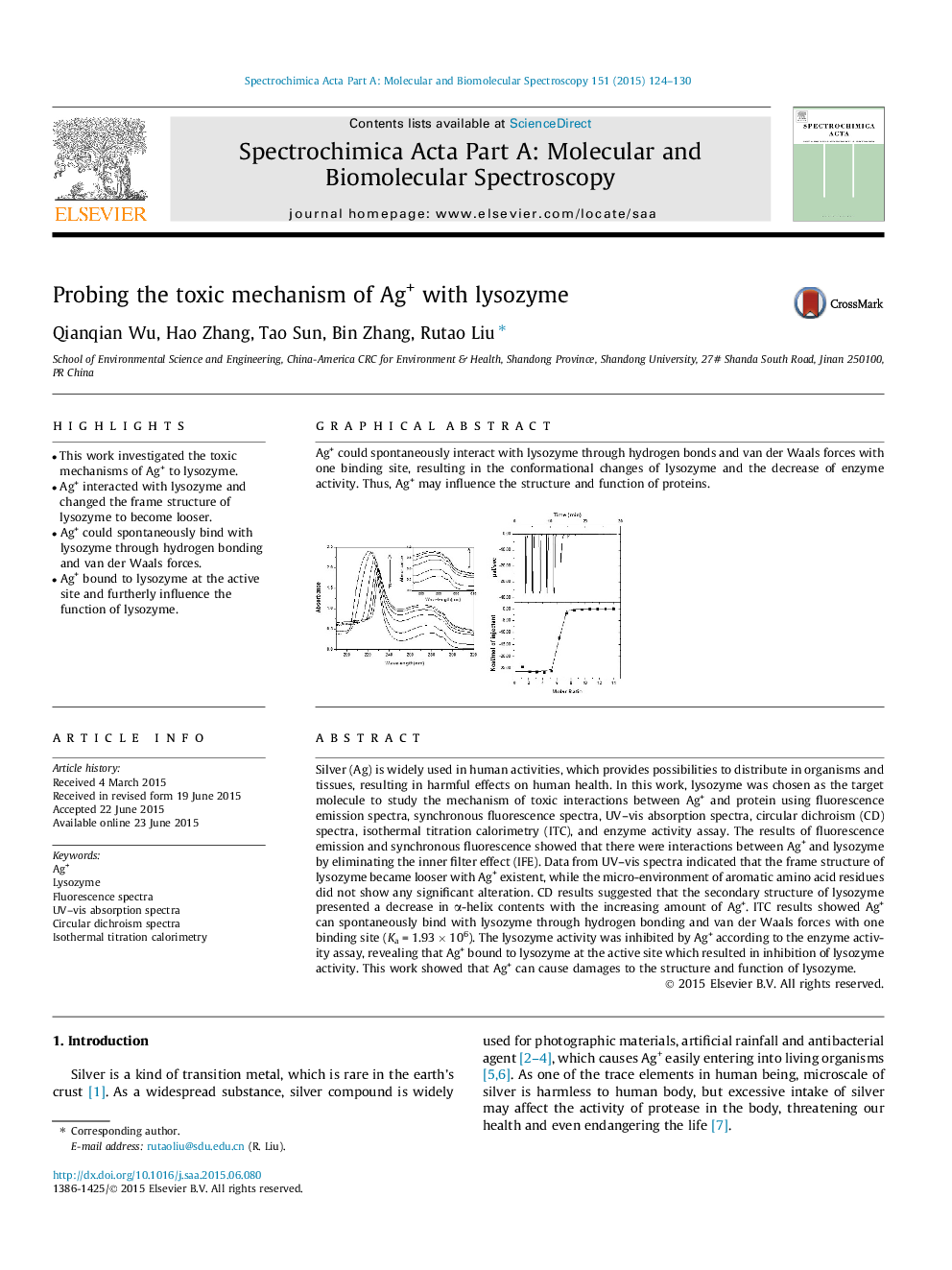| Article ID | Journal | Published Year | Pages | File Type |
|---|---|---|---|---|
| 1230062 | Spectrochimica Acta Part A: Molecular and Biomolecular Spectroscopy | 2015 | 7 Pages |
•This work investigated the toxic mechanisms of Ag+ to lysozyme.•Ag+ interacted with lysozyme and changed the frame structure of lysozyme to become looser.•Ag+ could spontaneously bind with lysozyme through hydrogen bonding and van der Waals forces.•Ag+ bound to lysozyme at the active site and furtherly influence the function of lysozyme.
Silver (Ag) is widely used in human activities, which provides possibilities to distribute in organisms and tissues, resulting in harmful effects on human health. In this work, lysozyme was chosen as the target molecule to study the mechanism of toxic interactions between Ag+ and protein using fluorescence emission spectra, synchronous fluorescence spectra, UV–vis absorption spectra, circular dichroism (CD) spectra, isothermal titration calorimetry (ITC), and enzyme activity assay. The results of fluorescence emission and synchronous fluorescence showed that there were interactions between Ag+ and lysozyme by eliminating the inner filter effect (IFE). Data from UV–vis spectra indicated that the frame structure of lysozyme became looser with Ag+ existent, while the micro-environment of aromatic amino acid residues did not show any significant alteration. CD results suggested that the secondary structure of lysozyme presented a decrease in α-helix contents with the increasing amount of Ag+. ITC results showed Ag+ can spontaneously bind with lysozyme through hydrogen bonding and van der Waals forces with one binding site (Ka = 1.93 × 106). The lysozyme activity was inhibited by Ag+ according to the enzyme activity assay, revealing that Ag+ bound to lysozyme at the active site which resulted in inhibition of lysozyme activity. This work showed that Ag+ can cause damages to the structure and function of lysozyme.
Graphical abstractAg+ could spontaneously interact with lysozyme through hydrogen bonds and van der Waals forces with one binding site, resulting in the conformational changes of lysozyme and the decrease of enzyme activity. Thus, Ag+ may influence the structure and function of proteins.Figure optionsDownload full-size imageDownload as PowerPoint slide
